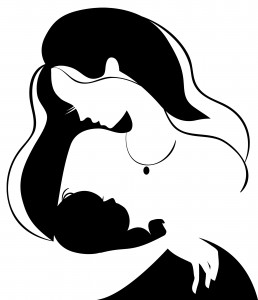 The relationship between mother and child is one universally recognized as one of the single most influential factors in a person’s physical, psychological, and emotional well-being. When a mother has Borderline Personality Disorder (BPD), her influence over her child can be extremely damaging on many levels.
The relationship between mother and child is one universally recognized as one of the single most influential factors in a person’s physical, psychological, and emotional well-being. When a mother has Borderline Personality Disorder (BPD), her influence over her child can be extremely damaging on many levels.
There are several different types of Borderline Personality Disorder mothers, as explained by Christine Anne Lawson, Ph.D., in her book “Understanding the Borderline Mother.”
It is understood that those suffering with Borderline Personality Disorder generally fall into two categories: low functioning and high functioning. Low-functioning people with BPD tend to demonstrate more helpless and depressive symptoms that can result in them seeking help.
Those who are high functioning generally do not reveal their symptoms to those outside of the immediate family and are less likely to seek any help at a Borderline Personality Disorder treatment center.
Lawson further breaks down these categories into four types when describing BPD mothers:
High-Functioning BPD Mothers
- The Witch: This type of mother with Borderline Personality Disorder seeks power and control over others, and reacts with rage that is unpredictable. Children and other family members live in fear of triggering her, and find that trying to behave as she wishes is pointless since it is not their behavior that precipitates the rages, but the mother’s own fear of abandonment. It is not likely that the Witch will ever seek BPD treatment or recognize her damaging behaviors. It is not uncommon for their children to develop depression, shame, and insecurity. They may even suffer with Post Traumatic Stress Disorder (PTSD) further along in life.
- The Queen: Queens need to be the center of attention and view others as a means to serve that craving. Children are mere reflections of the mother and must validate and agree with her in order to assure her that she has their respect. Queens can be manipulative and vindictive. They cross boundaries without recognition or regret. Children of Queens are not permitted to have their own needs or opinions, and are not encouraged to become individuals in their own right. Later in life, these children may begin to show signs of BPD themselves. At the very least, they suffer severe self-esteem issues.
Low-Functioning BPD Mothers
- The Waif: Waifs feel worthless and victimized. They can suffer from depression, anxiety, irrational fears, and feelings of vulnerability. Waifs feel helpless but reject attempts by family members to help them. In this way, they passively control others and are generally unable to nurture others. Children and family members may feel that they can help if only they do more, learn more, and give more. Unfortunately, this can lead to extreme frustration as the Waif continues to stay helpless as a means to control and avoid abandonment. Children may feel angry and alone, even as they are inextricably enmeshed with their mothers. They may develop codependency issues as adults.
- The Hermit: Hermits feel constantly betrayed by others and take criticism as a condemnation of who they are. They are constantly criticizing others to mask their own inner shame. They may socially isolate to quell their own fears and paranoia. Perfectionism is a hallmark of the Hermit, and they can rage or criticize when others fail to meet expectations. Like the Queen and the Witch, Hermits conceal their BPD symptoms from others outside of the family. Children of Hermits can develop their own mistrust and fear of others, as well as deep-seated fears of failure that can prevent them from developing as autonomous individuals, as they fear new situations and people.
“Understanding the Borderline Mother” is an excellent book that illuminates the intense and difficult dynamic between borderline mothers and their children. For adult children of BPD mothers, reading it is a means of further understanding what issues they face as a result of their upbringing, which can lead to important realizations and healing.
